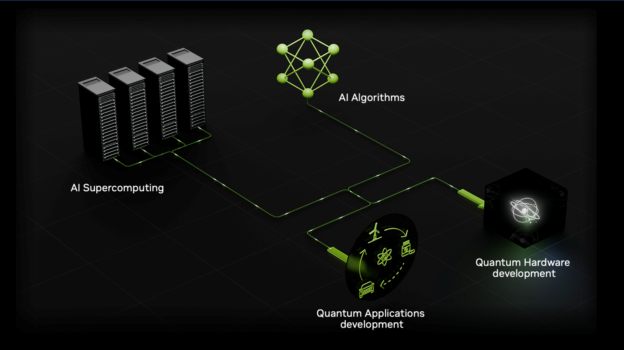NVIDIA is driving forward the quantum ecosystem by partnering on projects that span the application of AI to enable quantum computing, quantum hardware simulation, hybrid quantum-classical application development, and system integrations. The company is working with universities, including Arizona State and Carnegie Mellon, to develop CUDA-Q Academic course modules that will build on the success of previously released modules.
These modules focus on leveraging GPUs to accelerate hybrid applications through CUDA-Q. Key individuals involved in this work include Marwa Farag, a quantum algorithm engineer at NVIDIA, Yuri Alexeev, a senior quantum algorithm engineer, and Monica VanDieren, a senior technical marketing engineer who led the launch of the CUDA-Q Academic initiative. Algorithmiq is also set to showcase accelerated TEM applications in the coming months, ranging from materials science to cybersecurity.
Accelerating Quantum Computing with NVIDIA CUDA-Q
NVIDIA is driving the quantum ecosystem forward through partnerships and projects that span the application of artificial intelligence (AI) to enable quantum computing, quantum hardware simulation, hybrid quantum-classical application development, and system integrations. One key aspect of this effort is the development of CUDA-Q, a platform designed to accelerate quantum supercomputing.
Educating on Quantum Algorithms
To facilitate the adoption of CUDA-Q, NVIDIA is working with universities, including Arizona State and Carnegie Mellon, to develop CUDA-Q Academic course modules. These modules build upon the success of previously released Divide and Conquer MaxCut QAOA and Quick Start to Quantum Computing modules, focusing on how to leverage graphics processing units (GPUs) for accelerating hybrid applications through CUDA-Q. This educational initiative aims to equip researchers and developers with the knowledge and skills necessary to harness the power of quantum computing.
Showcasing Accelerated TEM Applications
Algorithmiq plans to demonstrate accelerated transmission electron microscopy (TEM) applications in the coming months, ranging from materials science to cybersecurity. By leveraging the capabilities of CUDA-Q, these applications can benefit from significant performance boosts, enabling researchers to tackle complex problems more efficiently.
NVIDIA’s efforts to drive the quantum ecosystem forward involve partnering on projects that span multiple areas, including the application of AI to enable quantum computing, quantum hardware simulation, hybrid quantum-classical application development, and system integrations. By collaborating with academia and industry partners, NVIDIA aims to accelerate the development of practical quantum computing applications.
Researchers and developers interested in exploring the potential of accelerated quantum supercomputing can learn more about NVIDIA’s quantum computing initiatives and download CUDA-Q to start experimenting with the platform. With CUDA-Q, users can leverage the power of GPUs to accelerate their quantum computing workloads, paving the way for breakthroughs in various fields.
In summary, NVIDIA is actively driving the development of the quantum ecosystem through its CUDA-Q platform, educational initiatives, and partnerships with academia and industry partners. By providing researchers and developers with the tools and knowledge necessary to harness the power of quantum computing, NVIDIA aims to accelerate the discovery of practical applications for this emerging technology.
NVIDIA Partners with Universities to Advance Quantum Computing Education





